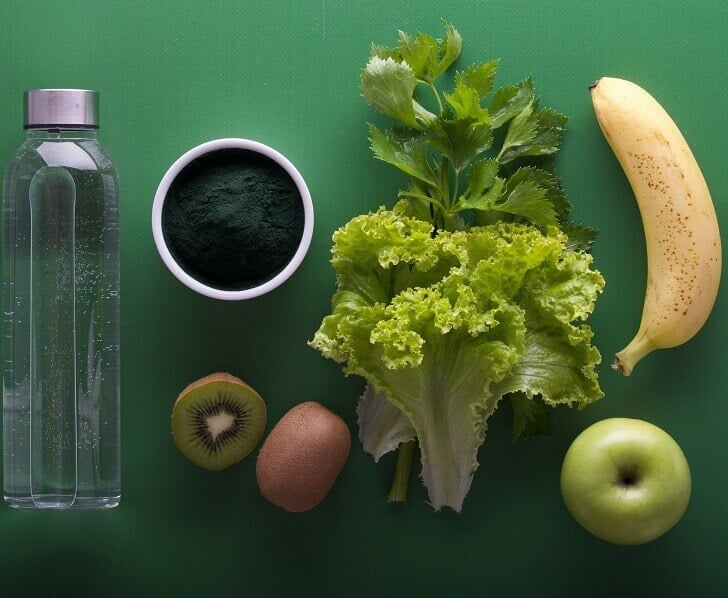5 mins read
How Does Alcohol Affect Your Liver?

Many of us are guilty of not always looking out for this organ in quite the same way it does for us. Alcohol probably springs to mind first. Who doesn’t enjoy a tipple every now and again, but too much and your liver will start to feel the effects. But it’s not just alcohol, food can have a huge impact on the health of this organ, too!
How does alcohol affect the liver?
Alcohol often receives bad press. Whether it’s binge drinking on a Saturday night, fights or its ability to cause disease, alcohol usually takes the blame. But for a lot of us, a glass of wine on a Friday evening or a pint with your Sunday dinner usually does you little harm. But long-term alcohol consumption can cause real damage to your liver.
The liver is a clever organ because it can regenerate itself. The liver can replace its lost tissue through the growth of the remaining tissue. It usually does so following surgery or after toxins or infection has damaged it. However, heavy long-term drinking can result in alcohol-related liver damage.
That’s because most of the alcohol we drink is metabolised by our liver. As it breaks down the alcohol, potentially harmful by-products are released. On average, it takes the body around an hour to process an alcoholic drink. However, the more you drink, the longer it takes. As a result, your blood alcohol levels rise because unprocessed alcohol enters your bloodstream. Eventually, it affects your heart and brain, resulting in drunken behaviour, or being intoxicated.
Find out how healthy your liver is with a simple finger-prick test which can be done at-home and posted to an accredited lab for analysis.
What is liver disease?
The problem with alcohol is you often can’t see the damage it is causing. Although most of us experience some short-lasting side effects like a hangover, what’s happening to our organs may not be a recurring thought.
Alcoholics are not the only individuals who can be affected by liver disease. Simply, drinking more than the recommended limits can increase your risk. The NHS guidelines recommend that we should drink no more than 14 units per week and these should be spread out over a few days. Plus, we should have 2-3 alcohol-free days, preferably consecutively. But it is easy to over drink, particularly if you’re not aware of how many units your drink contains.
There are identifiable stages of alcohol-related liver disease and identifying it early can help to halt its progression.
Fatty liver
A fatty liver is the first stage of liver disease. When our liver breaks down alcohol there is an increased production of fat. Usually, a healthy liver will have little or no fat contained within it, but if the organ is exposed to more alcohol than it can cope with, fat builds up within it.
Alcohol-related hepatitis
Once your liver becomes fatty, continuing to drink can cause liver inflammation as well as swelling and tenderness in the area it is located. This is called hepatitis.
Cirrhosis
Cirrhosis is the last stage of alcohol-related liver disease and unfortunately, it is irreversible. It usually occurs when the organ is subjected to continuous, long-term damage. The condition changes the appearance and texture of the liver. The shape of it becomes distorted, it isn’t as flexible due to scarring and nodules replace the once, smooth tissue on its surface.
Approximately one in 10 people who drink heavily will develop liver cirrhosis.
What are the symptoms?
- Abdominal pain
- Diarrhoea
- Nausea
- Vomiting
- Extreme tiredness or fatigue
- Bruising to the skin
- Jaundice – yellowing of the whites of your eyes and skin
- Itching
- Swollen legs, ankles or stomach area
- Weakness
- Loss of appetite
- Vomiting blood
What can I do to reduce my risk?
Reducing the risk is simple and starts with reducing the amount you drink. You should also follow the advice of the NHS by aiming to drink no more than 14 units of alcohol per week.
Here are some handy tips:
- If you’re going to drink, spread it out over 3 or more days in the week.
- Eat a healthy, balanced diet incorporating fruit, vegetables and whole grains. You should avoid drinking on an empty stomach as this can speed up how quickly your body absorbs alcohol, meaning you’ll get drunk quicker.
- Exercise. Taking part in physical activity can boost your mental and physical health. If you are fit, your body won’t need to work so hard if you get ill.
- Keep a diary of what you’re eating and drinking, so you can see how your diet and alcohol consumption may be affecting your health, moods and social life.
Enjoying a little tipple here and there or celebrating a special occasion is no reason to give up drinking forever. “Everything in moderation”, as they say.
If you’d like to check if your liver is healthy, Forth offers a simple finger-prick blood test which can be done at home. All samples are analysed at our accredited lab and your results will be available on your online dashboard within 48 hours. It’s an easy and hassle-free way to remain healthy.
What does the liver do?
We all know it exists but we may be forgiven for not knowing entirely what it does. The liver doesn’t just have one function in the body, though. It has a variety, all of which help to keep our bodies healthy.
The functions of the liver include:
- Detoxifying poisons and toxins
- Making cholesterol and bile
- Aiding the absorption of vitamins
- Processing digested food from the intestine
- Fighting infections
- Storage of iron, vitamins and important chemicals
- Clearing the blood of infections
- Making energy from the breakdown of food
- Controlling fat, amino acid and glucose levels in the blood
What does a healthy liver look like?
The colour of a healthy liver is a dark reddish-brown and it consists of two lobes. These are then divided into around 100,000 smaller lobules. The liver is made up of specialist cells called hepatocytes (hepato- from the Greek for liver).
On average, an adult liver weighs approximately 1.4 kilograms and takes up most of the space under your right ribs. Your gallbladder, where your bile is stored once it’s been made by the liver, is situated in a hollow on the underside of the liver.
- Health scores calculated
Close
Article references
-
Maher, J, J. (1997). Exploring Alcohol’s Effects in Liver Function. Alcohol Health and Research World: 21(1).
This information has been medically reviewed by Dr Thom Phillips
Thom works in NHS general practice and has a decade of experience working in both male and female elite sport. He has a background in exercise physiology and has published research into fatigue biomarkers.

Dr Thom Phillips
Head of Clinical Services
Related articles
Like this article? Here are some more based on similar topics.





